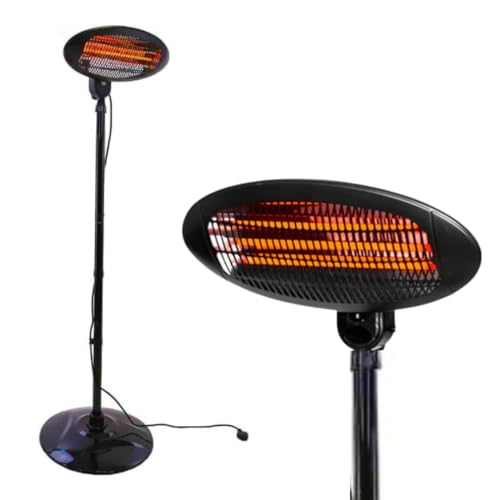How to Choose a Patio Heat Lamp Electric
You have many options when it comes to heating up your patio. In contrast to propane heaters that require refills electric heaters can provide instant heat by simply flipping a switch or pressing a button.

These units don't emit any gasses which could pose an health risk. Some units are equipped with adjustable heating settings to accommodate different distances.
Type of Heater
With the right patio heater, you can comfortably relax in your outdoor living spaces into the night and across the seasons. There are a variety of patio heaters, including freestanding natural gas and propane models, as also ceiling- or wall-mounted electric radiant heaters. Your choice will depend on the size of your area, the power sources available and personal preference.
The majority of patio heaters use electricity, natural or liquid gas to generate heat. They emit heat via convection heating as well as radiant heating. The output of patio heaters is measured in watts, which can be converted into British thermal units (BTUs), for comparison. Some models have adjustable heating settings for greater flexibility.
A patio heat lamp incorporates the burner on top of a pole with a perforated metal screen that reflect the flames and sends the heat downwards to warm furniture, people and other objects. Some patio heat lamps include reflective reflectors that sit on top of the burner, which can be silvered to reduce the amount that heat is lost upwards.
are electric patio heaters any good -known type of patio heater, a gas patio heater is typically found in outdoor seating areas of restaurants and bars as they generate a lot of heat quickly and distribute it evenly in all directions, making them ideal for warming multiple tables. These heaters are portable and can be powered by a propane tank or be plumbed in to your natural gas line. The latter is more convenient and has lower initial costs, but requires fuel.
Gas patio heaters are becoming more popular as more homes are equipped with natural gas lines. They are easy to set up, but require a dedicated and functioning gas line to operate in a safe manner. There are portable natural gas heaters that come with extension hoses that can help overcome this restriction, but they can be a risk of tripping and also a fire hazard when not being used.
Safety
Electric patio heaters can be used in enclosed areas, since they allow heat to radiate upwards and not outward. They are not intended for use under an unprotected roof. The heater must be located at least 6" away from the ceiling, or 18" away from the wall in order to prevent fire hazards.
The propane and gas patio heaters are usually suitable for use in enclosed areas with a durable cover that is designed for open-air use. These types of covers are typically made from fire-resistant canvas and have the option of having a roof that is closed. The safety issues with these kinds of outdoor patio heaters are related to the flame and fumes they produce. They should be located away from flammable objects, such as chairs and curtains.
Follow the safety and instructions guidelines of the manufacturer when installing the patio heater or heat lamp. Be sure to choose the one with UL and CSA certifications. Also, read the owner's manual thoroughly. Be extra cautious with pets and children and ensure that the heater is not in their reach while it's running. Some patio heaters that stand on their own such as EUROM's come with an automatic tipping safety that shuts the device off in the event of a fall.
If your patio heater runs on natural gas lines, it's important to check the condition of the line regularly and have it tested for leaks by a certified professional. If the line is in need of replacement get it replaced by a licensed plumbing professional. A professional can determine if the line is properly routed or if it should be routed through an underground pipe. A professional can also ensure that the patio heater is connected to an outlet that is GFCI-rated (ground fault circuit interruptioner) to safeguard against electric sparks and fires.
Installation
The size of the patio heater is positioned determines the amount of heat it can radiate into the area. The heater should be placed away from surfaces such as plastic and wood that could deform. Depending on the model of the heater, you can choose to mount it on a wall or structure using traditional mounting brackets. Certain models come with a soft start feature, which lowers the current peak in order to protect your circuits.
